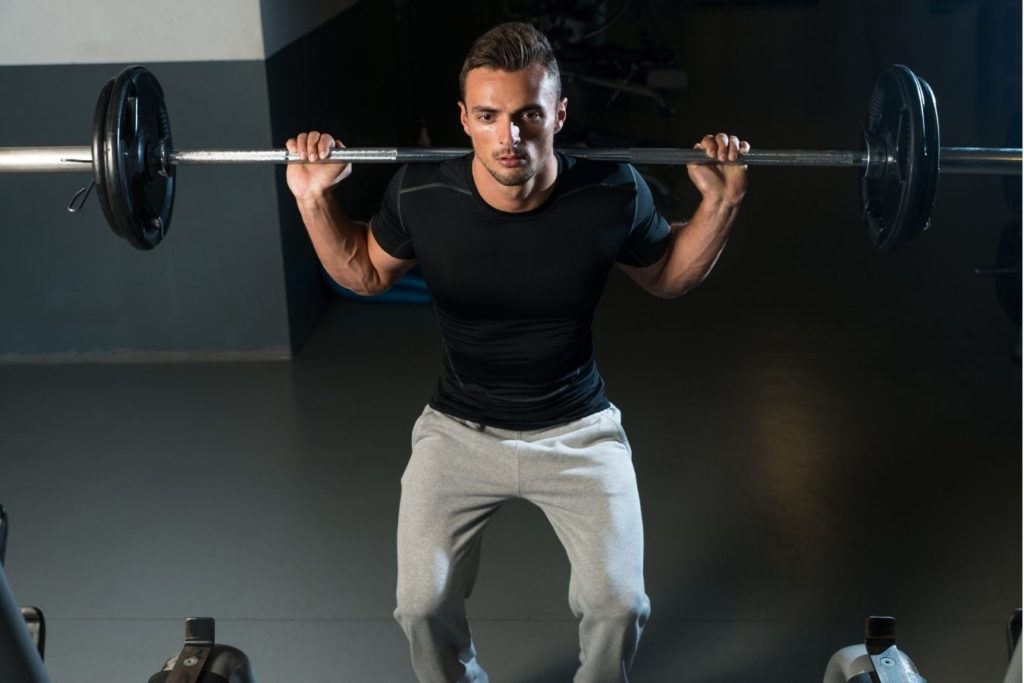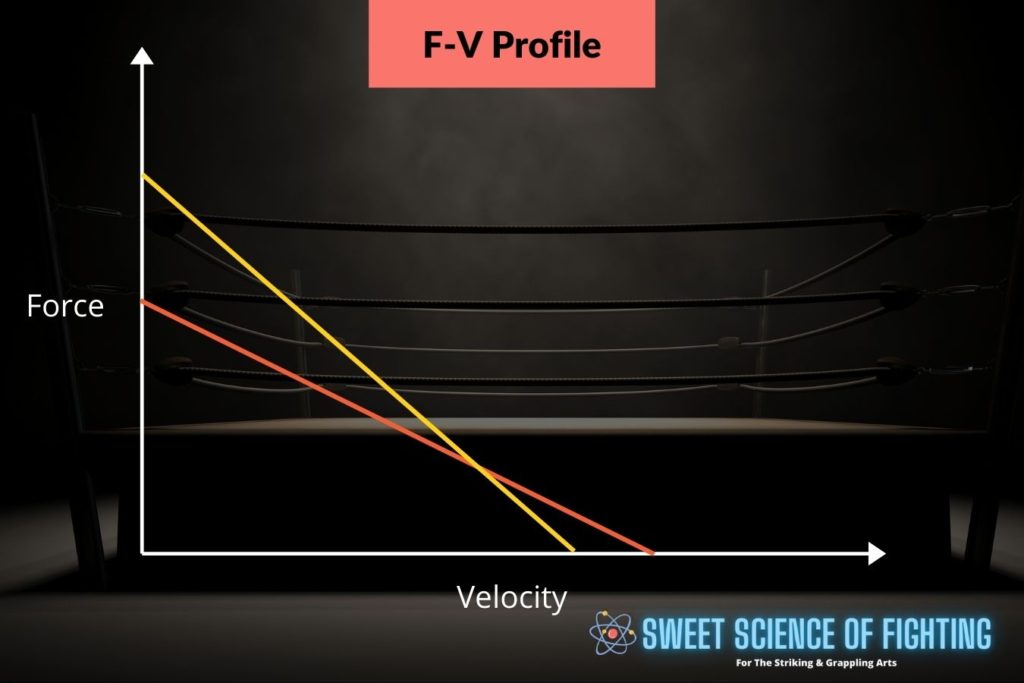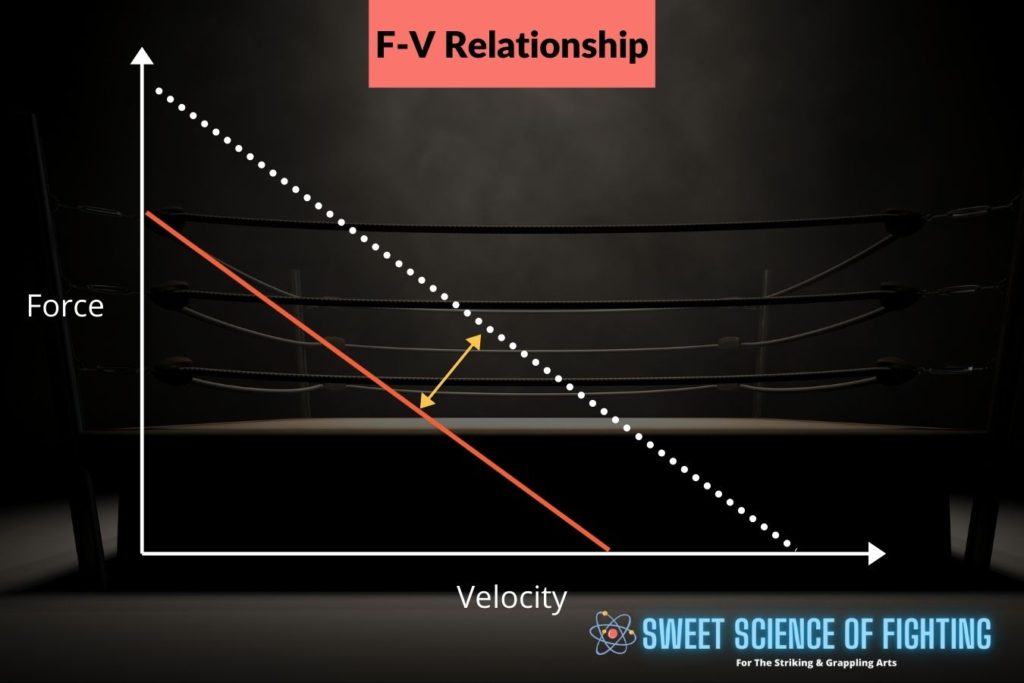Power is a crucial quality to possess as an MMA fighter. It is defined as force x velocity (or strength x speed in layman’s terms). One way of developing power is the jump squat exercise.
The jump squat allows the MMA fighter to select a load that either emphasises force, velocity, or maximal power. It is the simplest lower body power exercise that can be performed with load making it a perfect exercise for MMA athletes.
There are many exercises you can use to develop maximal power output. Why then should you use the jump squat?
Why Should You Use The Jump Squat For MMA

The jump squat is the most basic power exercise you can perform as an MMA fighter. It doesn’t require you to learn any special technique which means you can benefit from the exercise instantly.
In the sport of MMA, you are required to not only display power under unloaded conditions (striking), but you must be able to display high power outputs under loaded conditions (wrestling, grappling).
The jump squat is versatile enough to allow you to load it heavy or light depending on the outcome you are after.
The importance of lower body power hasn’t been lost in combat sports. Elite strikers show greater contributions from the legs when punching compared to sub-elite strikers [1]. Further, elite wrestlers show 12.5% greater peak power compared to amateurs [2].
Safe to say, lower body power is vitally important for both striking and grappling as an MMA fighter.

How to Dominate Every Fight with Raw, Explosive Power No One Can Match
Discover the underground blueprint that has quietly turned MMA hopefuls into legends, using nothing but sheer, brute force and bulletproof conditioning techniques.
But why the jump squat specifically?
Firstly, the jump squat employs the stretch-shortening cycle (SSC). The SSC is where a pre-stretch of the muscle and tendon occurs (eccentric or lowering phase) which is immediately reversed into a concentric contraction (upwards phase).
This pre-stretch allows greater force to be produced compared to no pre-stretch [3]. A no pre-stretch jump as an example would be a jump with the trap bar or a jump when starting sitting on a box.
Harvey Meale, founder of A1Athlete, states that “other conflicting research has indicated that trap bar jumps, because the positioning of the external load is below the hips as opposed to on the shoulders, it actually creates better muscular performance.”
The SSC is used during many different techniques in MMA such as striking and shooting takedowns. Enhancing the SSC component will potentially transfer to enhancing the performance of striking and shooting takedowns.
Secondly, based on the fighter’s individual make-up, the jump squat can be loaded to target the force side of the power equation if they need strength or to target the velocity side of the power equation if they need speed.
Even better, MMA fighters can use both in their program to develop both high power outputs against light and heavy loads.
Thirdly, the jump squat is easy to do. While the Olympic lifts such as the snatch and clean & jerk display peak power output at approximately 70-85% 1RM [4], the jump squat elicits peak power at approximately 20-45% 1RM of back squat [5].
However, jump squat peak power load may be higher (47-63% 1RM) if you are heavily strength and power trained. Unfortunately, there is no data quantifying the load in which peak power is maximized in MMA fighters. But most of the MMA population will not fall into this heavier category so below 45% 1RM would be the sweet spot.
An MMA fighter with a young training age in the gym would be able to employ a jump squat with 20-40% 1RM whereas performing a moderately loaded snatch or clean & jerk would be a different story.
Anecdotally, talking with Romanian professional boxer Cezar Juratoni, he would feel most prepared when he could jump squat 100 kg for reps.
The Perfect Jump Squat Technique
Vitor Belfort shows good jumping technique with 90 kg on his back. Which is not a light load to jump with!
Some key points you can take from this video:
- Don’t dip all the way down like you would full squat. Your dip should be similar to your normal unloaded jump.
- His feet stay flat on the dip. Don’t dip onto your toes and let your heel come off the floor.
- Reset each rep. Reps of loaded jump squats shouldn’t be continuous. Do as Vitor Belfort does.
How Heavy Should You Jump Squat
Optimal power load is a popular loading concept for power exercises. It refers to using a load that maximizes peak power. For example, if you performed jump squats over a range of loads from 20% 1RM to 80% 1RM, you may maximize power (the balance of force and velocity) at 40% 1RM.
Under the optimal power loading concept, you’d load all of your jump squats with 40% 1RM in your training to elicit the greatest power output possible during training.
Theoretically, training at the load that maximizes peak power should enhance your power output and performance to a greater extent than training with other loads.
This has been shown where greater performance was found with optimal power-loaded jump squats compared to plyometric only or traditional weight training only [6]. The problem with this study is no one is only performing plyometric exercise or traditional weight training as part of their strength and conditioning routine.
Optimal power loading comes with a caveat. One, it doesn’t take into account the fighter’s individual force-velocity profile. And two, training at optimal power load doesn’t maximize power output at heavy AND light loads. Just at moderate loads.

As an example, the red and yellow lines represent two different fighters. One fighter displays greater force while the other displays greater velocity. Training at optimal power load will affect these athletes differently.
Likely shifting their profiles further towards their strengths due to maximizing peak power at heavier loads for the force dominant fighter and vice versa for the velocity dominant fighter.
Ideally, you want to be able to shift the whole profile to the right like this.

Using the jump squat with loads between 20-45% 1RM and also loads much heavier than this (even up to 80% 1RM) will target both ends of the force-velocity profile and ideally, shift the line to the right enhancing both force and velocity [7].
How To Structure A Workout With Jump Squats For MMA
There are many ways to program jump squats within a strength and conditioning program to enhance power output in MMA.
Straight sets
Straight sets just refers to your traditional set and rep schemes. This is the simplest way to program your jump squats. For example:
3 x 3 @30% 1RM with 2-3 minutes rest between sets.
Cluster sets
Now we start getting a little more advanced. A cluster set is similar to a straight set except you will have 20-30 seconds rest between each rep or between every two reps. For example:
3 x 2+2+2 @30% 1RM with 30 seconds between reps and 2-3 minutes rest between sets.
So you’d perform 2 maximal reps, rack the bar, rest 30 seconds and repeat two more times. Why would you do this?
Cluster sets allow the maintenance of velocity throughout the set. If you performed all 6 reps without any rest, the speed of your reps would decrease as you got near the end of the set. Hence, your sets and reps would be performed at a higher quality.
The intra-set rest period also reduces the fatigue compared to performing all reps as a straight-set.
Contrast sets
A contrast is essentially pairing similar heavy and lighter movements together as a superset. Using the sample of the jump squat, a contrast set may look like this:
A1) Back Squat 3 x 3 @85% 1RM
A2) Jump Squat 3 x 4 @30% 1RM
The idea behind a contrast set is taking advantage of the post-activation potentiation phenomenon (PAP). It can be explained as picking a bucket of water that is really heavy.
Unbeknownst to you, your friend tips out half of the water before you lift the bucket again. You pick the bucket up thinking it is full and you rip it up so quickly the water splashes out and soaks you.
The same principle applies to the above superset. The heavy back squat sets a neural imprint in your brain so when it comes to the jump squat, it feels lighter than it usually would and you jump higher.
You can also use a specific contrast set where the MMA technique is the second exercise. For example:
A1) Jump Squat 3 x 4 @30% 1RM
A2) Double Leg Shots 3 x 2
Velocity drop
This is the most advanced set and rep scheme out of these listed. It requires a special device that is able to track bar velocity. This could be a Gymaware, Vmax Pro, PUSH Band, or any of the myriad of devices out there.
Using the velocity drop off method has similar outcomes to using cluster sets. Reducing fatigue and maintaining high quality of all the reps performed. An example would look like this:
3 x 90% velocity drop off from 1st rep @30% 1RM with 3+ minutes between sets.
As you may notice, there are no reps prescribed. The beauty of this method is the number of reps is dictated by how many good quality reps you can get. For example, if you jumped 1.0 m.s for your first rep, only once the velocity of your reps drops below 0.90 m.s would the set be terminated.
This has been shown to preferentially target Type IIX muscle fibers and minimizes fatigue compared to using a greater velocity drop off.
Which Set Structure Do You Use?
This will be highly dependent on the equipment you have and the training background you possess. Start with straight sets of jump squats. You can progress to contrast or cluster sets as you need change.
References
1. Filimonov, V. I., Koptsev, K. N., Husyanov, Z. M., & Nazarov, S. S. (1985). Boxing: Means of increasing strength of the punch. Strength & Conditioning Journal, 7(6), 65-66.
2. Demirkan, E., Koz, M., Kutlu, M., & Favre, M. (2015). Comparison of physical and physiological profiles in elite and amateur young wrestlers. The Journal of Strength & Conditioning Research, 29(7), 1876-1883.
3. Cormie, P., McGUIGAN, M. R., & Newton, R. U. (2010). Changes in the eccentric phase contribute to improved stretch-shorten cycle performance after training. Medicine & Science in Sports & Exercise, 42(9), 1731-1744.
4. Stone, M. H., Pierce, K. C., Sands, W. A., & Stone, M. E. (2006). Weightlifting: A brief overview. Strength and Conditioning Journal, 28(1), 50.
5. Harris, N. K., Cronin, J. B., Hopkins, W. G., & Hansen, K. T. (2008). Squat jump training at maximal power loads vs. heavy loads: effect on sprint ability. The Journal of Strength & Conditioning Research, 22(6), 1742-1749.
6. Wilson, G. J., Newton, R. U., Murphy, A. J., & Humphries, B. J. (1993). The optimal training load for the development of dynamic athletic performance. Medicine and science in sports and exercise, 25(11), 1279-1286.
7. Haff, G. G., & Nimphius, S. (2012). Training principles for power. Strength & Conditioning Journal, 34(6), 2-12.

